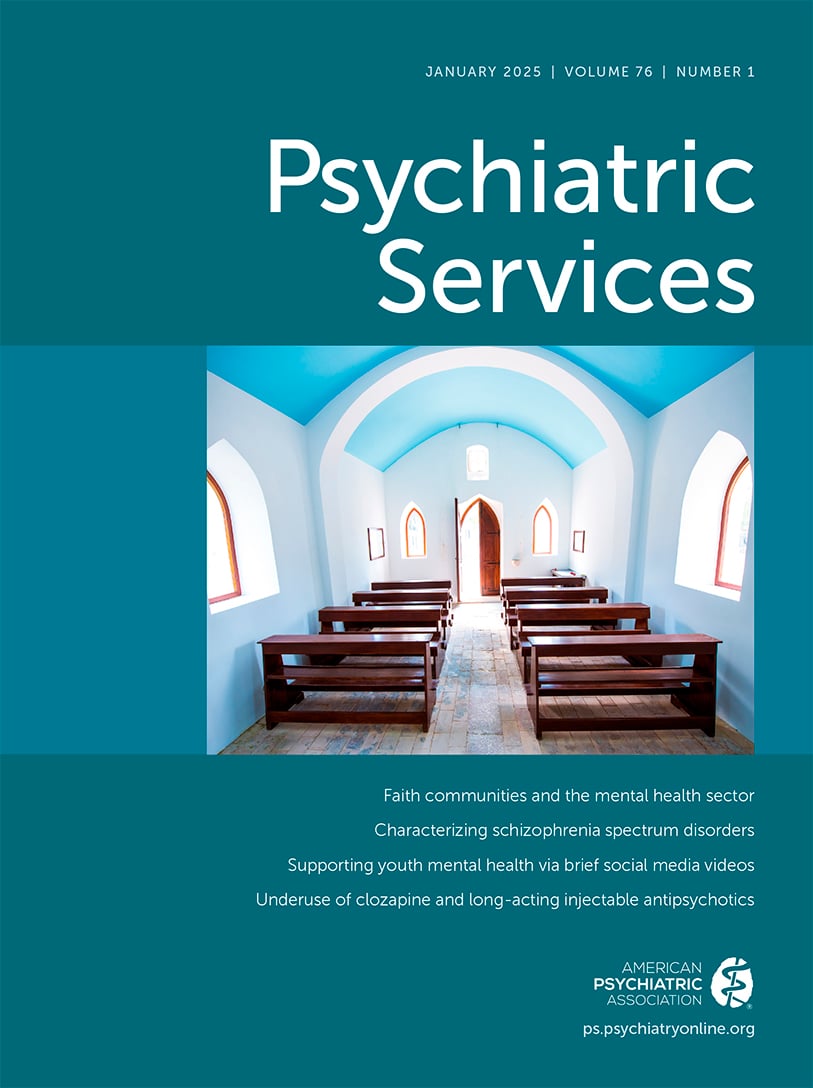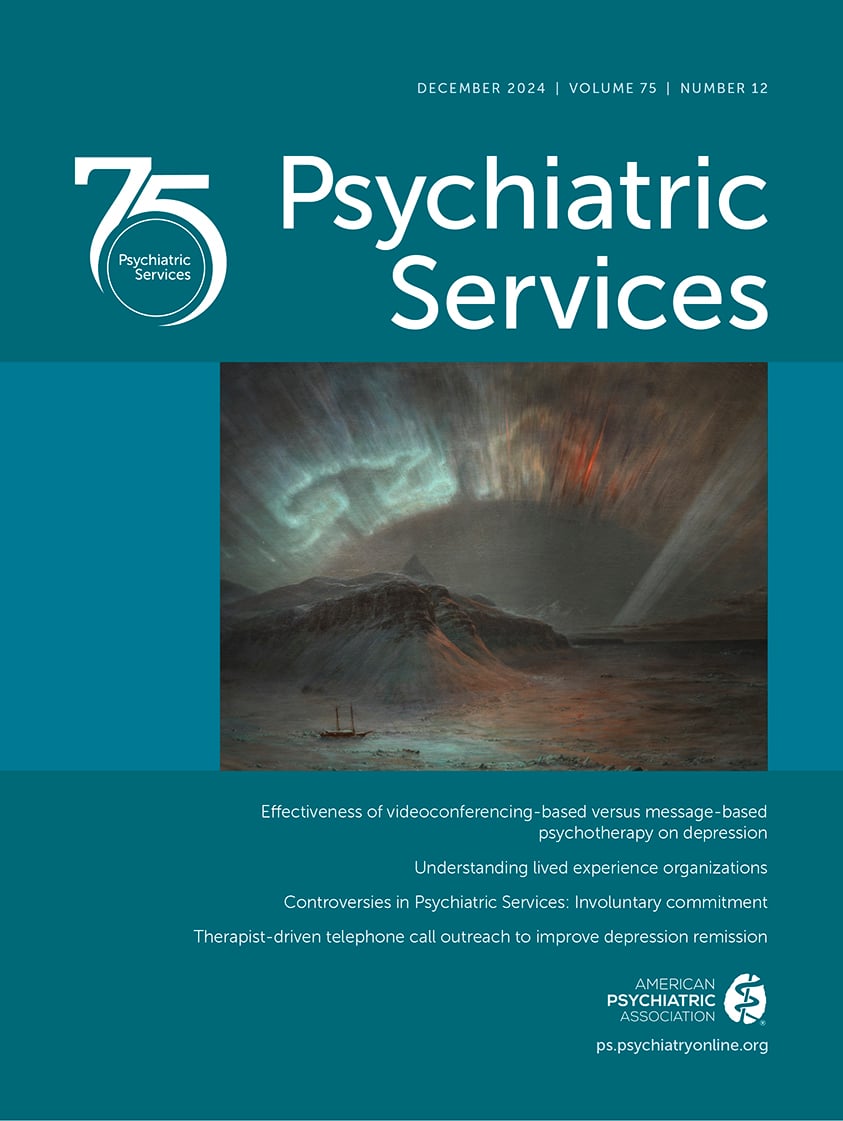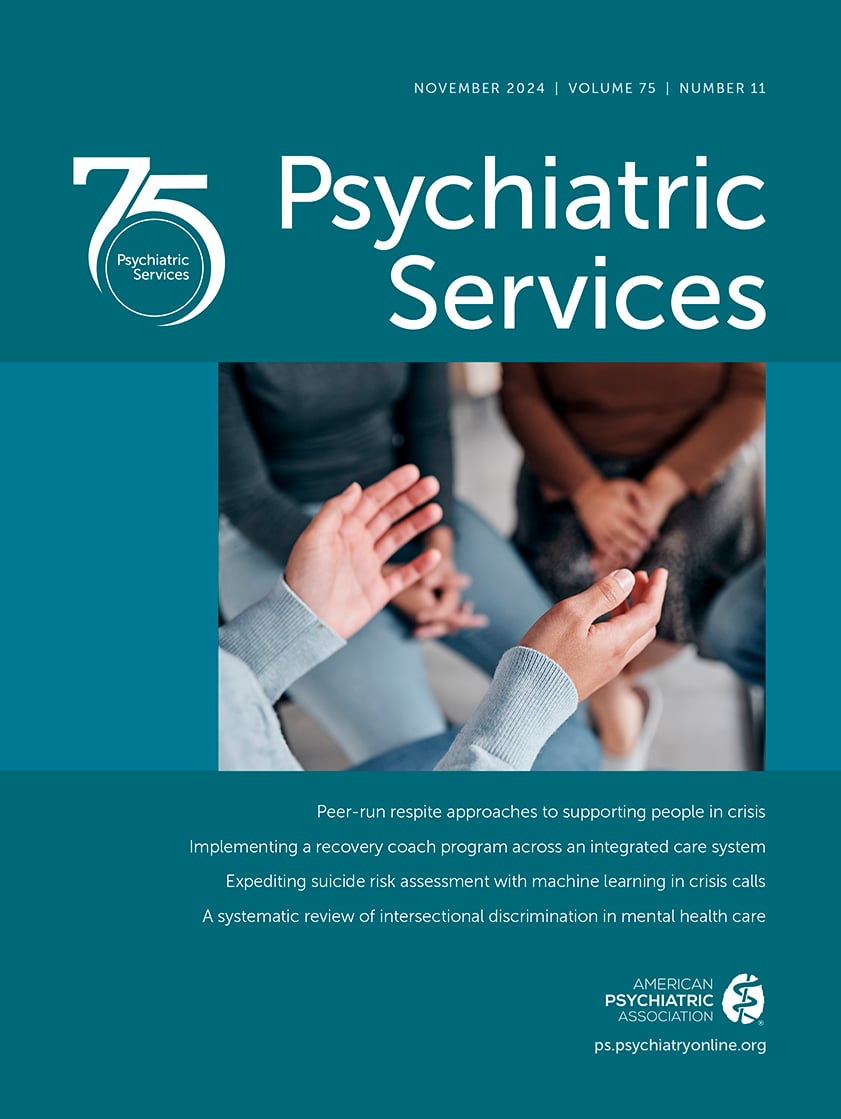Psychiatric Services
- Volume 53
- Number 4
- April 2002
Taking Issue
Departments
Columns
Other Articles
Publication date: 01 April 2002
Pages419–424OBJECTIVE: The authors sought to determine the number of articles on special populations published in this journal between 1950 and 1999 and the specific populations addressed. METHODS: The authors reviewed original articles, review articles, brief ...
https://doi.org/10.1176/appi.ps.53.4.419Publication date: 01 April 2002
Pages425–430OBJECTIVE:This study examined trends in the prescription of antipsychotic drugs in a nationally representative sample of physicians in nonfederal office-based clinical practice during the 1990s. METHODS: The authors analyzed physician-reported data from ...
https://doi.org/10.1176/appi.ps.53.4.425Publication date: 01 April 2002
Pages431–436In response to the effects of the managed care environment on patient flow and care, the department of psychiatry and behavioral sciences of the Johns Hopkins School of Medicine developed and has been managing a capitated behavioral health care program. ...
https://doi.org/10.1176/appi.ps.53.4.431Publication date: 01 April 2002
Pages437–446OBJECTIVE: This study compared baseline characteristics and clinical improvement after 12 months among homeless persons with a diagnosis of serious mental illness with and without a comorbid substance use disorder. METHODS: The study subjects were 5,432 ...
https://doi.org/10.1176/appi.ps.53.4.437Publication date: 01 April 2002
Pages447–451OBJECTIVES: One of the goals of managed mental health care has been to lower the use of inpatient psychiatric treatment. In the past, interventions that have limited hospitalization for persons with severe mental illness have led to greater involvement of ...
https://doi.org/10.1176/appi.ps.53.4.447Publication date: 01 April 2002
Pages452–457OBJECTIVE: The authors describe work conducted to identify, describe, and validate subgroups, or clusters, of adults with severe mental illness. METHODS: Clusters were first identified by using functional assessment ratings and statistical clustering ...
https://doi.org/10.1176/appi.ps.53.4.452Publication date: 01 April 2002
Pages458–463OBJECTIVE: A phase-specific intervention provided soon after the onset of a first episode of psychosis is likely to engender a more hopeful outlook. This article describes a community-oriented treatment program of phase-specific medical and psychosocial ...
https://doi.org/10.1176/appi.ps.53.4.458Publication date: 01 April 2002
Pages464–470OBJECTIVE: Only 60 percent of persons who experience panic attacks seek treatment for them, many at the emergency department. The author documented care-seeking behaviors among persons living in the community who had experienced panic attacks and studied ...
https://doi.org/10.1176/appi.ps.53.4.464Brief Report
Publication date: 01 April 2002
Pages471–473The study examined whether some patients with schizophrenia benefit from intensive inpatient psychodynamic psychotherapy while others are harmed by it. Multiple regression analyses were conducted with combined data from a follow-up study of 25 inpatients ...
https://doi.org/10.1176/appi.ps.53.4.471Publication date: 01 April 2002
Pages473–476A retrospective review of medical records of 158 patients who were discharged from a university-affiliated psychiatric hospital in the Midwest found that 29 patients (18 percent) did not attend their scheduled follow-up appointment. Multivariate logistic ...
https://doi.org/10.1176/appi.ps.53.4.473Publication date: 01 April 2002
Pages476–478The authors describe a computerized patient information system at a psychiatric hospital in Israel. The system is a fully implemented work instrument that promotes clinical safety and cost containment. It allows interactive online consultations, clinical ...
https://doi.org/10.1176/appi.ps.53.4.476Frontline Report
Letters
Book Reviews
News & Notes
Past Issues
View Issues Archive
Vol. 76 | No. 1

Vol. 75 | No. 12

Vol. 75 | No. 11
